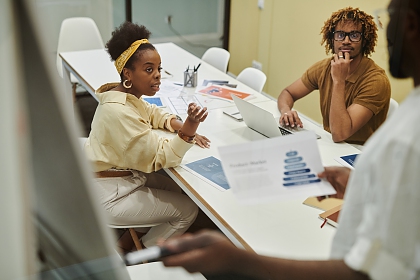Agile learning
Agile learning also known as learning agility, is the ability to learn and get results when things are changing and unclear. Agile learners pick up skills quickly, look for new ways of doing things and seek out challenging experiences to allow them to learn. They try things out, seek feedback and opinions from others, reflect on their experience and adapt their approach, rather than waiting for the perfect solution. They are comfortable with ambiguity and fluid situations.
Activities where you could practise agile learning
Naturally, your degree provides you lots of opportunities to learn but why not also look at how you learn? Are there ways you can put your subject knowledge or skills into practice either on your course, or by tutoring others to help them learn? How can you get feedback from others – including fellow students - when you try new activities? Are there different approaches to learning which you haven’t yet investigated, offered through My Learning Essentials?
By trying new strategies, you may find more effective ways of learning and develop good examples to demonstrate to employers your ability to be an agile learner.
The following activities can provide good opportunities to practise being an agile learner:
- Peer support and mentoring Supporting others' learning, reflecting on different approaches and trying new ways of encouraging learning can be a great way of developing agile learning skills.
- Volunteering Some voluntary organisations can be a bit disorganised and unclear about what exactly needs to be done - these are great opportunities to practise getting comfortable learning from others, testing and refining solutions without having clear defined ways of working.
- Manchester Leadership Programme This will expose you to learning outside your normal subject, working and being assessed with others from different disciplines and learning about the real life, often messy, leadership challenges.
- Students' Union activities With student-led activities and societies, you have to work with students from different backgrounds and perspectives to define what you want to achieve and work out ways of doing this. Volunteering to try things you haven't done before is a great way to improve your agile learning.
- My Learning Essentials Face-to-face and online workshops from our learning skills experts in the Library – it’s not all about reading books!
How is learning agility assessed in recruitment?
Application form and interview questions
Some examples of application form and interview questions which are designed to test agile learning skills:
- Tell me about a time when you had to learn something new in order to complete something to a tight deadline.
- How have you used feedback from others to improve a skill or weakness?
- Tell me about a time when you've tried something new, where you weren't sure if it would work? What happened, what did you learn, how did you try to improve your solution?
If you are unsure how to structure an answer for either application or interview questions, visit the application and interviews section of our website and find out about the CAR (context, action, result) and STAR (situation, task, action, result) models. Our recommendations are based on feedback from employers.
Assessment centres
Group discussions and problem solving exercises, particularly those for which there is no single correct solution, are ways for you to demonstrate learning agility. By testing out partial solutions, engaging with the rest of the group to gain different perspectives and learn from experience, you are demonstrating learning agility.

